In a country full of history and culture, Strasbourg holds its own. This quaint Alsatian town boasts beautiful architecture, mouthwatering cuisine, and is home to France’s most enchanting Christmas market.
Not only that, but its location creates a fascinating fusion of French and German cultures.
I moved to Strasbourg in 2019 and have since spent my free time exploring the city. I’ve visited popular sites, found hidden gems, and eaten at the best (and worst) restaurants in town.
In this guide, I’ll share with you my recommendations for spending three days in Strasbourg. It’s a well-rounded itinerary that includes the city’s history, culture, and cuisine.
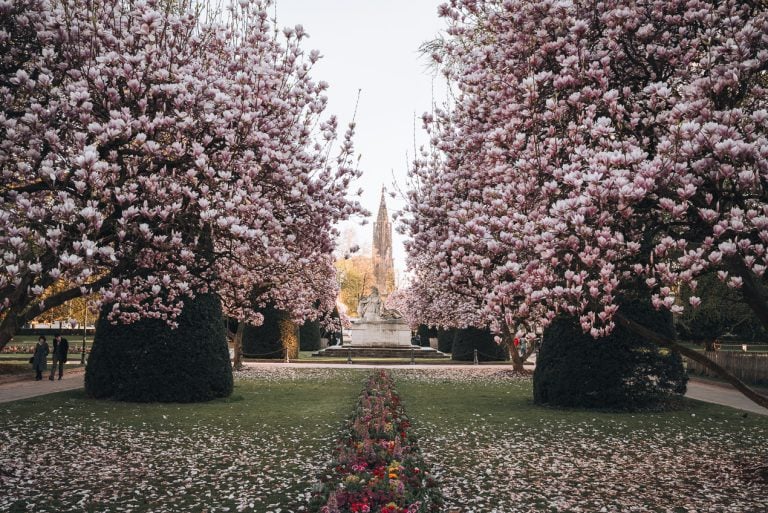
#1 Travel Guide
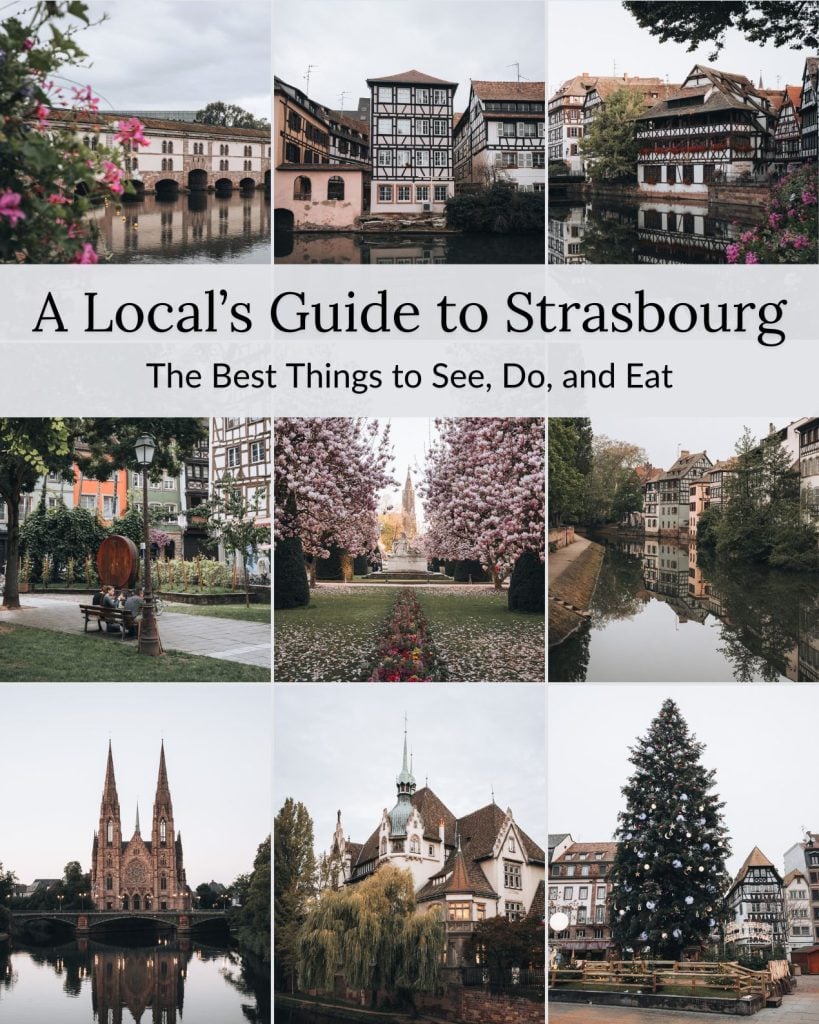
Planning a trip to Strasbourg?
I’ve been living in Strasbourg since 2019, and I’ve poured my love of this city into this 70-page e-book.
It’s full of things to do, insider tips, itineraries, and much more.
Day 1: History and Heritage
Morning
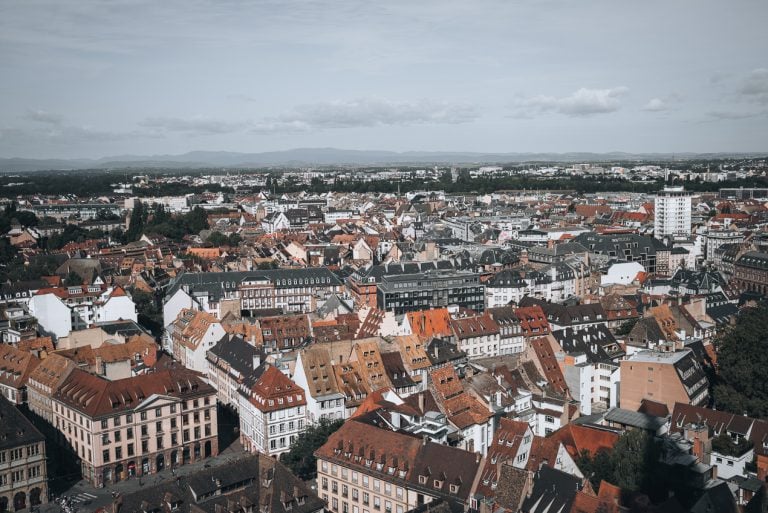
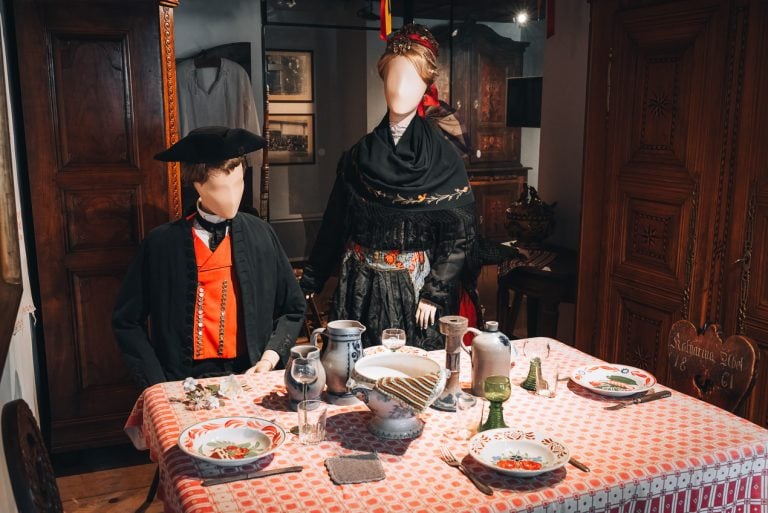
- Visit the Strasbourg Cathedral: Standing at 142 meters (465 feet), this masterpiece took more than 300 years to build. Inside, there’s the astronomical clock, sculptures, and paintings. You can also climb to the top platform for a 360-degree panorama.
- Tour the Alsatian Museum: This is one of the best museums in Strasbourg. It focuses on the history and culture of Alsace between the 18th and 19th centuries.
- Go on a Batorama Boat Tour: I recommend the Red Tour, which is a 70-minute ride that takes you around Grand Île and to the European Parliament. There’s an audio guide that covers the history of Strasbourg along the way.
Helpful Tip: The Alsatian Museum is currently undergoing renovations and will be closed until 2027. An alternative is the Historical Museum of the City of Strasbourg.
Afternoon
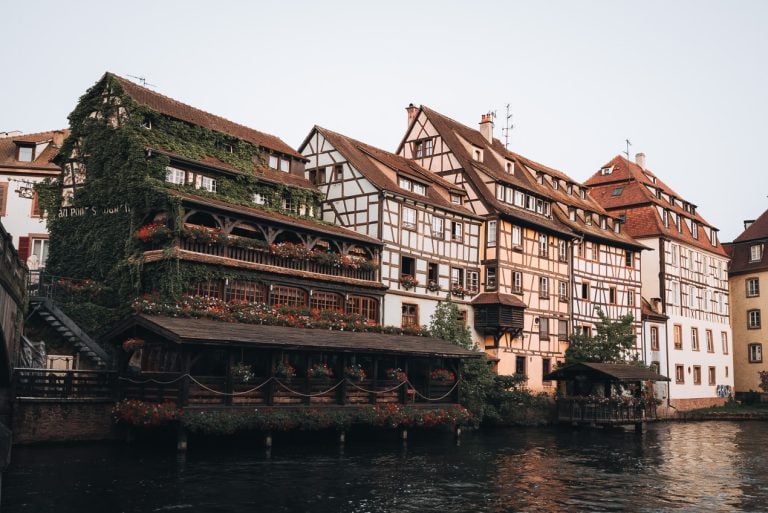
- Lunch at Fink Stuebel: A traditional Alsatian restaurant featuring traditional dishes, such as choucroute garnie and baeckeoffe. It’s tucked away in a charming half-timbered house, complete with classic tables and chairs.
- Explore La Petite France: This is Strasbourg’s picture-perfect neighborhood. It’s where you’ll find the most colorful half-timbered houses. Highlights include Pont Saint Martin, Place Benjamin Zix, and Pont du Faisan.
- Walk along Ponts Couverts: This series of three bridges and four towers was once used to fortify the city. While they’ve undergone renovations over the years, they first appeared in the 13th century.
- Visit the Vauban Dam: Built in the 17th century, it served to prevent enemy advancement by flooding the southern end of Strasbourg. The dam was only used once before it was converted into a historical monument. Today, you can climb to the top terrace for a beautiful view.
Helpful Tip: I’ve reviewed a lot of places to eat in Strasbourg, so I recommend checking out my restaurant guide if you need more options.
Evening
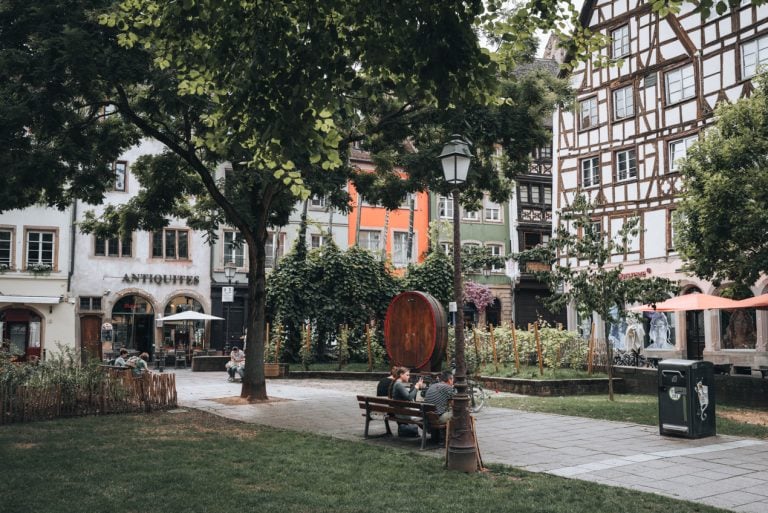
- Dinner at La Cloche à Frommage: Here, the shining ingredient in every dish is cheese. And they have everything from fondues to cheese tastings. I’ve eaten at La Cloche à Fromage three times and have never been disappointed.
- Relax in Place des Tripiers: This small square has a few benches where you can sit, relax, and enjoy the evening. There are also a few bars and cafés around the square, perfect for a nightcap.
Day 2: Art and Culture
Morning

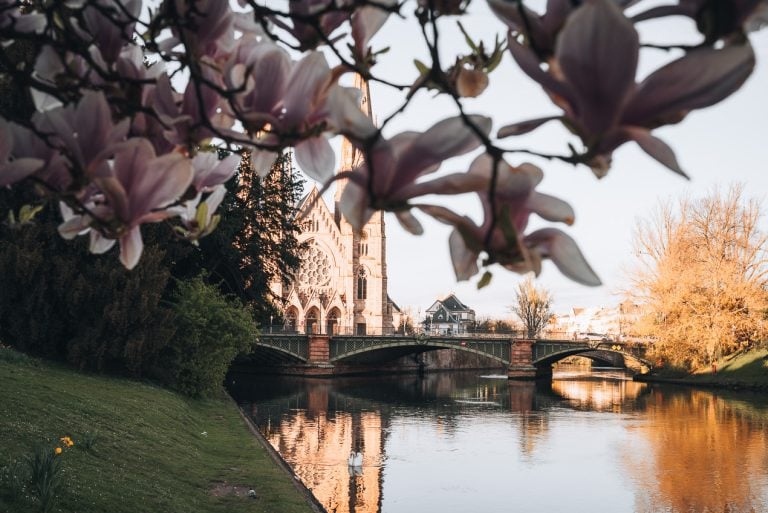
- Visit the Palais Rohan: Built in 1720, the Palais Rohan served as the residence for the prince-bishops and cardinals of the House of Rohan. It was later converted into three museums: the Archaeological Museum, the Museum of Fine Arts, and the Museum of Decorative Arts.
- Explore Neustadt: Built when Strasbourg belonged to Germany from the late 19th to the early 20th century. It’s mostly known for its architecture, particularly in Place de la République, but St. Paul’s Church and the Planetarium are also worth checking out.
Helpful Tip: While all three museums at the Palais Rohan are worth it, I recommend picking one. My favorite was the Museum of Decorative Arts. It displays the evolution of the palace over time, and it houses the previous versions of the astronomical clock.
Afternoon
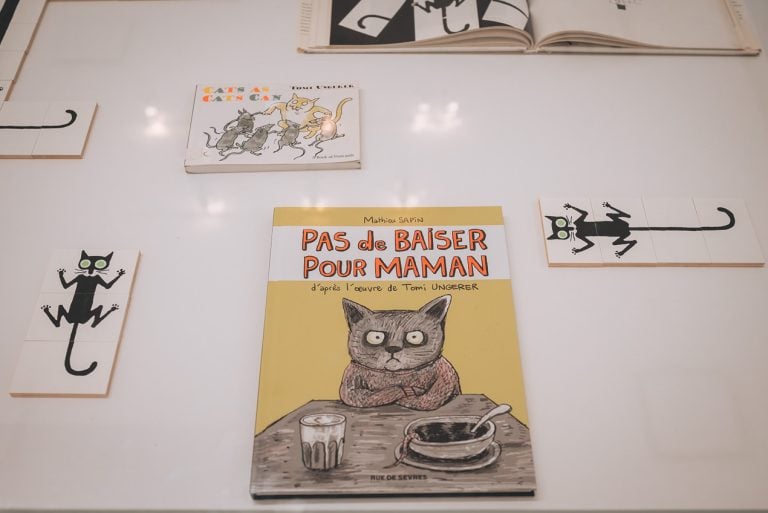
- Lunch at Bande à Part: A restaurant with simple yet varied menu. You’ll find traditional Alsatian dishes as well as classic French food. The chef uses local, fresh products and the wine list is incredible.
- Visit the Tomi Ungerer Museum: Dedicated to Tomi Ungerer, a Strasbourg-born illustrator and writer, this museum showcases his work and that of similar artists.
- Explore Place Broglie: This is one of the main squares in Strasbourg. It’s also where Rouget de l’Isle reportedly sang the Marseillaise for the first time. And, alongside the Banque de France, there is a plaque dedicated to the event.
Evening

- Dinner at Binchstub Broglie: This eatery serves the best tarte flambée in Strasbourg. They have the traditional version as well as a few other variations, including dessert options. My favorite was the Munster tarte flambée.
- Hang out in Place du Marché Gayot: Originally the home of a poultry market, it’s now a popular hangout spot. There are several restaurants, bars, and cafés to choose from. I’ve been to most of them, and you can’t go wrong with any.
Day 3: Strasbourg Today
Morning
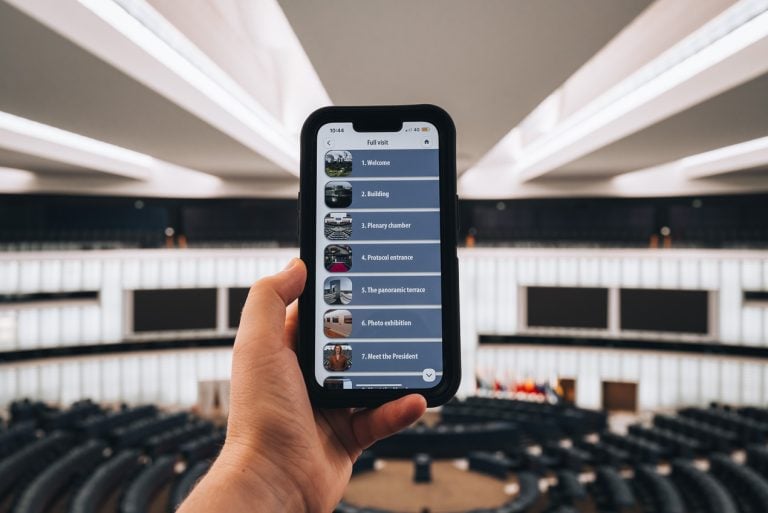

- Visit the European Parliament: You can visit the parliament via a self-guided audio tour and even listen to a plenary session. There’s also a terrace with a beautiful view of the city. It’s one of the best free activities in Strasbourg.
- Walk around Parc de l’Orangerie: This is the largest park in Strasbourg. Admire the gardens, go for a walk, picnic on the grass, or rent a paddle boat to explore the lake.
Helpful Tip: If you’re traveling from Strasbourg’s city center, you will need to take the tram (Line E). Otherwise, it’s a 45-minute walk.
Afternoon
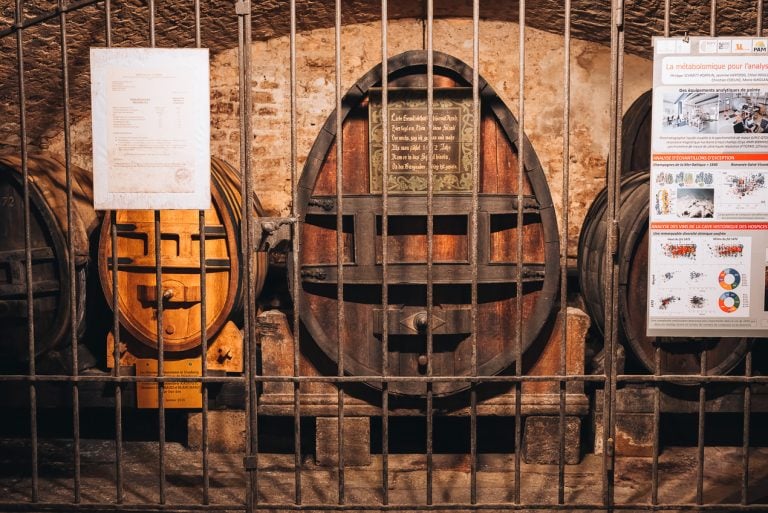
- Lunch at Vino Strada: The menu is Alsatian cuisine with a modern twist. They also have an incredible wine selection.
- Visit the Cave Historique des Hospices de Strasbourg: Established in 1395, this was where wine was made and used to cure various illnesses. Today, you can tour the cellar for free and visit the oldest barrel of white wine in the world (dated 1472).
- Afternoon Tea at Au Fond du Jardin: This small teahouse is known for its Madeleines du Voyage. Each one is handcrafted to like a work of art. Stop by for teatime or buy a few from the boutique to take home.
Helpful Tip: If teatime is not for you, Taaka Beer Spa is a fun alternative.
Evening
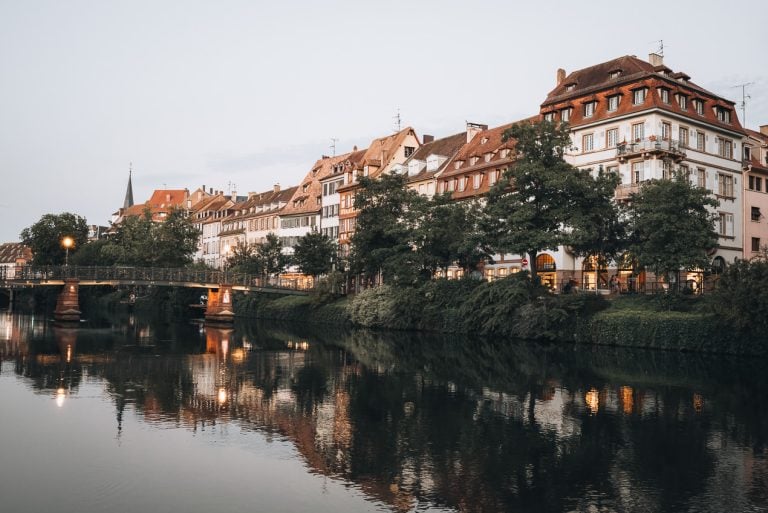
- Dinner at La Chaumière: This contemporary French restaurant prepares every dish with fresh seasonal ingredients. They also use a wood-fired oven so there’s a smoky flavor in every bite.
- Walk Along Quai des Bateliers: There are several little shops and cafés where you can relax and enjoy the evening. Otherwise, alongside the canal, there’s a walking path that winds around the city.
Conclusion
Strasbourg is the cultural and economic hub of Alsace.
Its canals and half-timbered houses give a small-town feel while its landmarks and museums showcase its history.
This three-day itinerary is meant to give you a feel of what Strasbourg has to offer.
So, take your time, wander the streets, try some local delicacies, and immerse yourself in all it has to offer.
Now that you have your itinerary, why not check out my guide on where to stay in Strasbourg?
Read More Articles
I hope you enjoyed my post and found it helpful. Here are some other articles that I think you might find interesting.
- Best Time to Visit Strasbourg, France (Local’s Guide)
- 18 Best Things to Do in Strasbourg on Sunday (from a Local)
- 21 Amazing Things to Do in Strasbourg in December